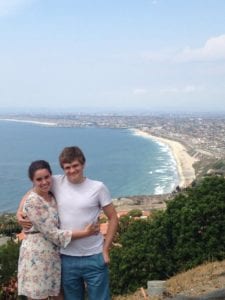Posted By: Sara Cullinan, PhD, Deputy Editor, AJHG
Each month, the editors of The American Journal of Human Genetics interview an author of a recently published paper. This month we check in with Andy Dahl to discuss his paper “A robust method uncovers significant context-specific heritability in diverse complex traits.”

AJHG: What prompted you to start working on this project?
Andy: My broad research goal is to identify unknown, biomedically significant disease subtypes. A key component of this work is robust tests for genetic heterogeneity between subtypes, which can strongly suggest that putative subtypes are biologically meaningful. However, existing interaction tests had low power for complex traits, so we developed a new one ourselves. Fortunately, GxEMM, the resulting tool which we presented in this work, is also useful beyond subtypes. This is because the same math for gene-subtype interaction can be used for gene-environment or gene-gene interaction.
AJHG: What about this paper/project most excites you?
Andy: I am excited by the fundamental, long-standing biomedical questions about disease heterogeneity that GxEMM can help address. For example, psychiatrists have long debated questions like: Which treatments are optimal for which patients? How common is misdiagnosis? Is current nosology too coarse or too fine? Are different risk factors important for different people? A solid understanding of genetic disease architecture would provide an invaluable framework for beginning to derive lasting answers to each of these questions.
AJHG: Thinking about the bigger picture, what implications do you see from this work for the larger human genetics community?
Andy: Human genetics studies over the past decade have focused overwhelmingly on the additive model of genetic architecture, proposed almost 100 years ago. This has been a useful approximation for many purposes, but results from model organisms, animal breeding, and systems biology suggest the additive model is not a faithful representation of causal biology. Our report demonstrates that it is often possible to learn meaningful non-additive biology in humans–by studying several datasets and thousands of traits–consistent with several recent studies. Together, these results suggest that human geneticists should more regularly consider nonlinear models for tasks like heritability estimation and genetic risk prediction, especially as sample sizes and phenotyping depth increase.
AJHG: What advice do you have for trainees/young scientists?
Andy: I am a young scientist myself, as I am just starting my first faculty position. But, so far, I have found that working with good people should be a top priority. Worrying about authorship and stressing over credit is terrible for science, your health, and your productivity.
AJHG: And for fun, tell us something about your life outside of the lab.
Andy: I like to play piano to relieve stress and decompress after a long day.
Andy Dahl, PhD, is an Assistant Professor in the Department of Medicine, Section of Genetic Medicine, at the University of Chicago. He has been a member of ASHG since 2013.
